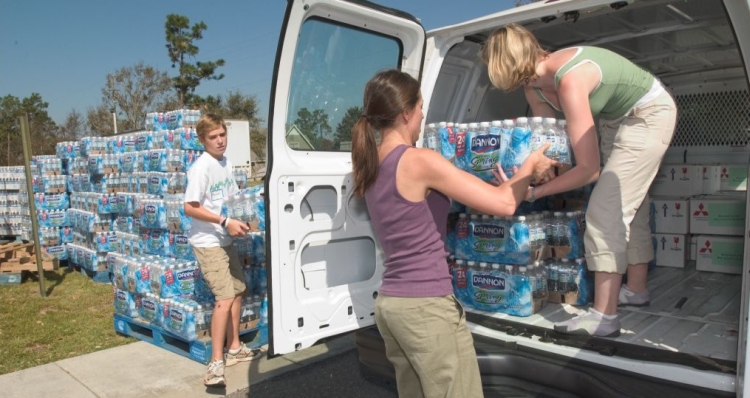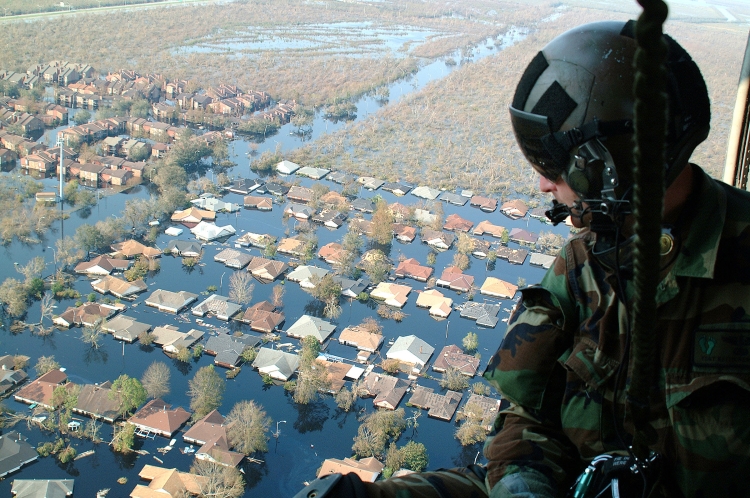Looking back on Katrina and Rita: Love in Action
(Second Harvest President and CEO Natalie Jayroe looks back on the ten years since Hurricanes Katrina and Rita)
As I sat in my Memphis home on August 30, 2005, watching the horror of the broken levees unfold on CNN, I immediately knew where I wanted to be. I had been asked to help turn around a struggling food bank in California, so it took me until November to get down to the Joint Field Office (JFO) in Baton Rouge as the Feeding America representative.
I spent the next intense month coordinating response efforts with other voluntary organizations and getting a crash course in the chaos of disaster response from the surreal setting of a windowless grey concrete former department store. Working with urgency with the Red Cross, Catholic Charities, Salvation Army, Southern Baptist Convention, Seventh-day Adventists, Mennonites and so many others to provide food, shelter and clothing for hundreds of thousands of people struggling to get home and get started on rebuilding their lives. Shocked by the governmental dysfunction at all levels, we also faced the challenge that first winter of getting warm clothes to people living in their cars, in parks and in houses without power.
Upon arriving in New Orleans, my impression was of a city wounded unto death – everything seemed still, colorless, silent: Houses tumbled into each other, huge oak trees uprooted, flooded and ruined cars under overpasses, thousands of refrigerators and debris piled up in neutral grounds, and the smell of decay and mold. Even as I cracked the first of many windshields of my car and replaced tires punctured by nails and glass, I fell instantly, overwhelmingly and unalterably in love with the city and region.
Within 48 hours of the landfall of Katrina, Second Harvest staff had reassembled in Baton Rouge, even though many had lost their own homes. By January 2006, Second Harvest had become the largest food bank in the world, distributing more than 8 million pounds (or 6.6 million meals) in September 2005 alone after Hurricane Rita devastated the western side of our service area. Hundreds of food bank experts came from around the country, setting up logistics systems, driving trucks, operating forklifts. With little available housing, staff lived on the floor of the warehouse, in RVs, hotels and finally FEMA trailers.
For the first two years I could not stop myself from crying when describing the overwhelming obstacles people faced to rebuild their lives. But I also cried because there was hope. There was the courage to honestly confront the challenges the people of New Orleans and South Louisiana faced long before the storms, and the determination to make the most of the opportunities afforded by the devastation. If the New Orleans Saints could overturn decades of failure with a single play in the repaired domed building that had witnessed so much suffering, we could triumph over all adversity and build a better, stronger, fairer city and region.
With renewed and new partners, Second Harvest has worked to be part of the renaissance. We opened a branch in Lafayette to improve the outreach to Acadiana and Lake Charles. Moving into a larger Harahan facility allowed us to handle the more than 27 million pounds (22.5 million meals) we now distribute annually to 210,000 people across 23 parishes. Programs to help especially vulnerable people are in place, such as backpacks for children to take home food on the weekends, mobile pantries to deliver fresh food directly to rural areas, and school pantries that allow families to take home nutritious groceries. Our Community Kitchen now prepares and distributes 400,000 meals annually. We started teaching people to stretch their food dollars and cook more nutritiously, and also set up a hotline in which Wellness Coordinators help people sign up for SNAP benefits (including Disaster SNAP) and refer them to other lifelines.
For Second Harvest, hunger is always a disaster, whether it is felt by a single child going to school hungry, an elderly person choosing between food and medicine, or an entire region displaced by the largest natural and manmade disaster ever to befall the United States. Bolstered by the courage and commitment of the people of New Orleans and South Louisiana, and the compassion of so many across our country and the world, we have distributed more than 250 million meals since those darkest days of 2005. We are privileged to be part of the great lesson in love New Orleans and South Louisiana has shown to the entire world: honoring and cherishing our unique past, and helping to build a stronger, better and more resilient future.


